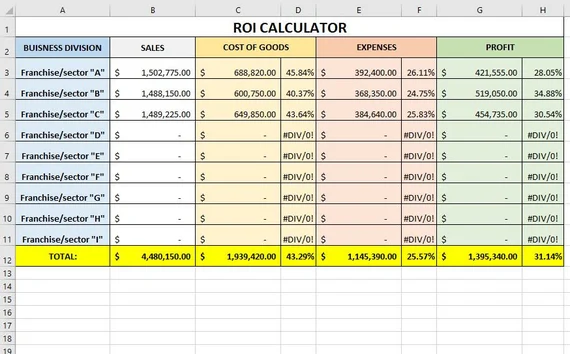Search engine optimization (SEO) is the cornerstone of digital visibility, and at the heart of SEO lies the strategic use of keywords. Keywords help search engines understand what your content is about and connect it with users’ search intent. Mastering SEO keywords can significantly improve your site’s ranking and drive targeted traffic to your content. In this article, we’ll explore proven techniques for keyword optimization, including the integration of Persian term کلمه کلیدی در سئو to emphasize its global relevance.
Understanding the Importance of Keywords in SEO
Keywords are the terms and phrases that users type into search engines when looking for information. These can range from single words like “SEO” to long-tail phrases like “best SEO techniques for 2025.” They play a vital role in how search engines rank and display your website in search results.
When used correctly, keywords align your content with what your audience is searching for. However, keyword stuffing or poor usage can lead to penalties. Therefore, understanding how to research, place, and track keywords is essential.
Keyword Research: The Foundation of SEO Success
Why Keyword Research Matters
Keyword research is the process of discovering the terms your audience is using to find products, services, or content. It helps you:
- Understand market demand
- Discover trends
- Target the right audience
- Increase the potential of ranking higher
Whether you’re working in English or Persian (such as focusing on کلمه کلیدی در سئو), the fundamentals remain the same.
Tools for Effective Keyword Research
There are many tools available to streamline keyword research:
- Google Keyword Planner: Great for PPC and organic keyword ideas
- Ahrefs: Offers in-depth keyword metrics and competitor analysis
- SEMrush: Allows keyword tracking and site audits
- Ubersuggest: Beginner-friendly tool with basic and advanced keyword data
- AnswerThePublic: Ideal for finding question-based search queries
These tools help you analyze search volume, competition level, cost-per-click, and keyword difficulty. It’s important to target a mix of short-tail and long-tail keywords for a well-rounded strategy.
Types of Keywords and Their Usage
Understanding the different types of keywords helps you plan better content:
Short-Tail Keywords
These are usually 1-2 words long and have high search volume but also high competition. Examples include “SEO,” “keywords.”
Long-Tail Keywords
These are more specific phrases such as “how to research SEO keywords effectively.” They may have lower search volume but higher conversion rates.
LSI Keywords (Latent Semantic Indexing)
LSI keywords are semantically related to your primary keyword. For example, if your main keyword is “SEO strategy,” LSI terms might include “search engine optimization tips,” “ranking techniques,” or even foreign-language variants like کلمه کلیدی در سئو.
Branded Keywords
These include your brand name or product and are often easier to rank for. For example, “Nike running shoes” is a branded keyword.
Geo-Targeted Keywords
Used for local SEO, these include geographic locations. For example, “SEO services in New York.”
Keyword Placement for Maximum Impact
Knowing where to place your keywords can make a big difference in how search engines read and index your content.
Page Titles and Meta Descriptions
Your primary keyword should be in the title tag and meta description. These are the first things users see on search engine results pages (SERPs), so optimizing them increases click-through rates.
Headers (H1, H2, H3)
Use your main keyword in the H1 tag, and related or secondary keywords in H2 and H3 subheadings. This structure helps search engines understand the content hierarchy.
Introduction and Conclusion
Place your main keyword early in the introduction and again in the conclusion to reinforce relevance.
URL Slugs
Incorporating your keyword into the URL (e.g., /seo-keywords-techniques) enhances clarity and ranking potential.
Image Alt Text and File Names
Images should be optimized with keywords in both the file name and alt attributes to improve accessibility and visibility in image searches.
Throughout the Content
Sprinkle your keywords naturally throughout the article. Avoid overuse, which can lead to penalties. For multilingual content, use contextually relevant keywords like کلمه کلیدی در سئو to connect with non-English audiences.
Optimizing Content for User Intent
Keyword optimization is not just about inserting words; it’s about satisfying the user’s search intent. There are four types of search intent:
- Informational: Users want to learn something.
- Navigational: Users are looking for a specific site or page.
- Transactional: Users are ready to buy.
- Commercial Investigation: Users are comparing products or services.
Match your content to the user’s intent by understanding what they expect when searching a keyword. If someone searches کلمه کلیدی در سئو, they likely want educational content about keywords in the SEO context in Persian.
Leveraging Semantic SEO and Contextual Keywords
Search engines now use advanced algorithms that understand the context of your content. This is where semantic SEO plays a role. Instead of focusing solely on exact match keywords, use synonyms, variations, and relevant terminology to add depth.
For example, instead of repeating “SEO keyword” 20 times, include related terms like “search terms,” “key phrases,” “topic relevance,” and even cultural or linguistic variations like کلمه کلیدی در سئو when targeting Persian-speaking markets.
Measuring Keyword Performance
Tracking your keyword performance helps refine your SEO strategy. Use tools like:
- Google Search Console: Tracks clicks, impressions, and keyword ranking
- Google Analytics: Measures traffic sources and behavior
- Ahrefs or SEMrush: Provides keyword position tracking and trend analysis
Pay attention to metrics such as:
- Click-through Rate (CTR)
- Bounce Rate
- Average Session Duration
- Keyword Position Changes
These metrics give you insights into what’s working and what needs improvement.
Avoiding Common Keyword Mistakes
While optimizing for keywords, avoid these pitfalls:
Keyword Stuffing
Overusing keywords can make content unreadable and lead to penalties. Use a natural flow and focus on user experience.
Ignoring User Intent
Targeting high-volume keywords that don’t match your audience’s intent results in poor engagement and high bounce rates.
Not Updating Old Content
Refresh your existing articles with updated keywords and content to maintain rankings and relevance.
Skipping Multilingual Optimization
If your audience includes non-English speakers, incorporate local keywords like کلمه کلیدی در سئو into your strategy for greater reach.
Conclusion
Mastering SEO keywords is a blend of research, strategy, and adaptability. From identifying user intent to optimizing placement and tracking results, every step plays a crucial role in boosting your visibility on search engines. By incorporating global and localized terms such as کلمه کلیدی در سئو, you can broaden your audience and enhance content relevance across diverse markets.






